
- Home
- Travel Packages
- Top Destination
-
Travel Attraction
By Category
Top Attraction

- Travel Agents
- Car Rentals
- Hotels
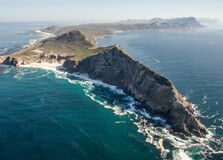
The Cape of Good Hope is one of South Africa’s most famous landmarks, drawing visitors from around the world to experience its dramatic beauty, rich history, and diverse wildlife. Situated at the southern tip of the Cape Peninsula, it is often mistakenly thought to be the southernmost point of Africa, but it actually lies just a few kilometers to the west of the true southernmost point. Despite this, it remains a symbol of the meeting point between the Atlantic and Indian Oceans and has historical significance as a key point for sailors during the Age of Exploration. Why Cape of Good Hope is Famous The Cape of Good Hope is famous for its natural beauty, rugged coastline, and its historical significance in maritime navigation. It is often seen as a symbol of the perseverance of early explorers, with the site being an essential stop for sailors who were navigating around the African continent to reach the East Indies. The landmark is a part of the larger Table Mountain National Park and is renowned for its spectacular views of the ocean, cliffs, and surrounding vegetation. The Cape of Good Hope is also famous for being a haven for wildlife, particularly birds and animals, with baboons, antelope, and a variety of bird species populating the area. Visitors can hike through its natural reserves and see the extraordinary coastal ecosystem. The meeting of the cold Atlantic and warm Indian Oceans at this point also makes it a unique geographical feature. How to Reach the Cape of Good Hope Getting to the Cape of Good Hope is relatively straightforward from Cape Town, and the scenic drive along the coast is an added attraction. Here's how you can reach this iconic landmark: By Car Driving is the most common way to reach the Cape of Good Hope. From Cape Town, you can follow the M6 road to the scenic coastal route via the Cape Peninsula. The drive takes around 45 minutes to an hour, depending on traffic. The road offers breathtaking views of the ocean, with several viewpoints where you can stop and take in the scenery along the way. By Tour Bus For those who prefer not to drive, there are several guided tours that run to the Cape of Good Hope from Cape Town. These tours usually include stops at notable spots like Hout Bay, Simon's Town, and the penguin colony at Boulders Beach, in addition to the Cape of Good Hope. Public Transport Public transport options are more limited, but there are buses that operate from Cape Town to various locations around the Cape Peninsula. It's advisable to take a tour bus or private transport for convenience and ease of access to the Cape of Good Hope. Weather at the Cape of Good Hope The Cape of Good Hope enjoys a Mediterranean climate, with warm, dry summers and mild, wet winters. The summer months (November to February) are the most popular time to visit, with temperatures ranging from 18°C to 25°C (64°F to 77°F). The warm temperatures and clear skies make it an ideal time for outdoor activities like hiking and sightseeing. Winter (June to August) sees cooler temperatures, ranging from 10°C to 18°C (50°F to 64°F). While it may rain during the winter months, the weather is usually mild. It is important to note that the weather can be quite changeable at the Cape of Good Hope, so visitors should be prepared for sudden changes in temperature and wind. Timing and Opening Hours The Cape of Good Hope is a popular destination and is open every day from 6:00 AM to 5:00 PM. The entrance gate closes at 5:00 PM, so it’s important to arrive early to fully explore the area and take in the sights. The peak tourist season falls during the summer months, so expect more visitors at this time. However, visiting early in the morning or later in the afternoon can offer a quieter, more serene experience. Entry and Visit Details Visitors to the Cape of Good Hope must pay an entrance fee to access the park. The entry fees contribute to the maintenance of the area and the conservation of its natural environment. As of the most recent information, the entrance fee is approximately R160 for adults and R80 for children, but this may vary, so it’s advisable to check ahead before your visit. Once inside the park, there are several activities to enjoy, including hiking, bird watching, and simply taking in the incredible views of the coast and ocean. There are also visitor facilities, including a café, shop, and restrooms, to ensure you have everything you need for a comfortable visit. History and Architecture The Cape of Good Hope has a rich history that dates back to the 15th century when Portuguese sailors first navigated the waters around the Cape in search of a sea route to India. It was named the "Cape of Good Hope" by Vasco da Gama in 1498, as it signified a new route to the East Indies, offering hope for the Portuguese in their pursuit of spice trade dominance. The Cape became a critical point for sailors traveling around the southern tip of Africa. Throughout the 17th and 18th centuries, the Cape became a vital maritime hub for European powers, and the Dutch established a settlement at the Cape in 1652. The area has seen the construction of several forts and lighthouses, the most notable being the Cape Point Lighthouse, built in 1859. This lighthouse remains one of the most famous landmarks of the Cape Peninsula and offers breathtaking panoramic views from the top. Things to Do at the Cape of Good Hope The Cape of Good Hope offers a wide variety of activities for nature lovers, history buffs, and adventure seekers. Here are some of the most popular things to do: 1. Hike to the Cape Point Lighthouse The hike to the Cape Point Lighthouse is one of the most popular activities at the Cape of Good Hope. The walk offers stunning views of the ocean, rugged cliffs, and dramatic landscapes. It’s a moderate hike, but the panoramic views at the top are worth the effort. 2. Visit the Cape of Good Hope Nature Reserve The Cape of Good Hope Nature Reserve is part of Table Mountain National Park and is home to a variety of wildlife, including baboons, antelope, and zebra. There are several walking and hiking trails through the reserve, allowing you to explore its diverse flora and fauna up close. 3. Enjoy the Beaches There are several beautiful beaches around the Cape of Good Hope, such as Buffels Bay and Dias Beach. These beaches are perfect for swimming, picnicking, or just relaxing and soaking in the natural beauty. However, the waters can be cold and the currents strong, so always exercise caution when swimming. 4. Explore the Historical Sites In addition to the lighthouse, there are several historical sites to explore, including the remains of old forts, the historical Cape Point Railway, and a visitor center with exhibits about the area’s history. Facts About the Cape of Good Hope The Cape of Good Hope is not the southernmost point of Africa; that title belongs to Cape Agulhas, located about 150 kilometers (93 miles) to the southeast. The Cape is home to a variety of plant species, including fynbos, a unique type of shrubland found only in the Cape Floral Kingdom. The Cape Point Lighthouse is situated 238 meters (781 feet) above sea level, making it one of the highest lighthouses in the world. The Cape of Good Hope forms part of the larger Table Mountain National Park, a UNESCO World Heritage Site. Tips for Visiting the Cape of Good Hope Wear comfortable shoes: The hiking trails can be rugged, so bring sturdy footwear for walking. Bring sunscreen: The weather can be sunny, and you’ll want to protect yourself from the harsh rays. Check the weather: The weather can be unpredictable, so it’s a good idea to check the forecast before heading out. Respect wildlife: The animals in the park are wild, so don’t approach them or feed them. Bring a camera: With its stunning vistas and wildlife, the Cape of Good Hope is a photographer's dream. Conclusion The Cape of Good Hope is one of the most iconic and breathtaking natural landmarks in South Africa, offering a combination of dramatic views, rich history, and a unique coastal ecosystem. Whether you’re interested in hiking, wildlife, or simply enjoying the beauty of the area, the Cape of Good Hope is a must-visit destination in Cape Town. Its cultural significance, historical landmarks, and natural beauty make it a place of both reflection and adventure, truly embodying the spirit of the Southern Hemisphere.
Explore More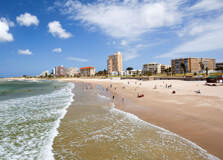
Hobie Beach is a beloved Blue‑Flag beach located in the Summerstrand suburb of Gqeberha (formerly Port Elizabeth) along Algoa Bay. Known officially as Hobie Beach, it is a hub for swimming, sunbathing, surfing, and kiteboarding. Adjacent to the iconic Shark Rock Pier and the lively Boardwalk entertainment complex, it’s a popular destination for families, watersport enthusiasts, and event goers :contentReference[oaicite:0]{index=0}. How to Reach Hobie Beach, Port Elizabeth Getting to Hobie Beach is easy: By Car: Off Marine Drive in Summerstrand—free parking is available near Shark Rock Pier and the beach’s south end :contentReference[oaicite:1]{index=1}. By Public Transport: Local buses and taxis serve the area along Marine Drive; the beach is a short walk from the nearest stops :contentReference[oaicite:2]{index=2}. By Air: Gqeberha Airport is approximately 15 km away; taxis or ride‑shares can drop you near the Boardwalk, just steps from the sand :contentReference[oaicite:3]{index=3}. Weather at Hobie Beach Thanks to its oceanic climate, the beach features mild, pleasant conditions year‑round: Summer (Nov–Mar): Beach days typically see 20–27 °C, with water temperatures around 18–21 °C—ideal for swimming and sunbathing :contentReference[oaicite:4]{index=4}. Winter (Jun–Aug): Cooler air (10–18 °C), calm seas, and good chances of spotting migrating whales along the coast :contentReference[oaicite:5]{index=5}. Timings and Entry Details Opening Hours: The beach is open all day, but lifeguards patrol primarily during the official Blue‑Flag season (Oct–Apr). Entry Fee: Free access for public use; parking may require a small fee depending on location and time. Why Famous for Hobie Beach? Hobie Beach is celebrated for its safe shores, vibrant atmosphere, and water‑sports variety. It hosts major events—such as the annual Splash Festival (March/April), beach volleyball matches, and international boardsailing competitions :contentReference[oaicite:6]{index=6}. The nearby Shark Rock Pier, Port Elizabeth’s only pier, changed the coastline’s sands and is now a popular spot for fishing, strolling, and catching sunset views :contentReference[oaicite:7]{index=7}. History and Coastal Development The construction of the Shark Rock Pier in the early 20th century trapped sediment, creating the sandy cove that is now Hobie Beach. Over time, the area evolved from a modest surf spot into a major recreational zone linked with the Boardwalk and Summerstrand’s expansion :contentReference[oaicite:8]{index=8}. Things to Do at Hobie Beach Swimming & Sunbathing: Calm, warm water and soft sand make it perfect for all ages :contentReference[oaicite:9]{index=9}. Water Sports: Windsurf, kitesurf, jet ski, surf ski, bodyboard—or join scuba or snorkeling trips :contentReference[oaicite:10]{index=10}. Explore Rock Pools: At low tide beneath the pier, kids can find starfish, octopus, and other intertidal creatures :contentReference[oaicite:11]{index=11}. Fishing & Pier Walks: The Shark Rock Pier is a prime local fishing spot and great for sunset strolling :contentReference[oaicite:12]{index=12}. Warehouses & Dining: Enjoy snacks and meals at boardwalk cafés, bars, arcades, and the nearby Red Windmill complex :contentReference[oaicite:13]{index=13}. Wildlife Watching: Between June and December you may spot migrating whales; dolphins are often seen year‑round :contentReference[oaicite:14]{index=14}. Attend Events: The Splash Festival, beach volleyball tournaments, concerts, and fireworks all draw crowds :contentReference[oaicite:15]{index=15}. Interesting Facts Hobie Beach holds the prestigious Blue Flag rating for cleanliness and safety :contentReference[oaicite:16]{index=16}. It hosts the swimming start of the Ironman South Africa triathlon, with a 3.8 km swim each event :contentReference[oaicite:17]{index=17}. The Shark Rock Pier is the only one in Nelson Mandela Bay and significantly altered the coastline's shape :contentReference[oaicite:18]{index=18}. The beach remains a top spot for local surfers despite moderate wave conditions :contentReference[oaicite:19]{index=19}. Tips for Visiting Hobie Beach Arrive early on weekends or during festival season to secure parking. Bring swimming gear and sliders for rock-pool exploration. Use sunscreen, a sunhat, and a towel for beach comfort. Follow lifeguard flags and never swim outside patrol hours. Check the event calendar so you can enjoy volleyball tournaments, splash events, or local concerts. Visit between June and December for whale watching—binoculars come in handy. Rent equipment or take classes for kiting, windsurfing, and scuba—local operators line the promenade. Wrap up your day with a relaxed meal or drink along Marine Drive or at the Boardwalk. Hobie Beach is much more than a sandy shoreline—it’s a cultural icon of Gqeberha. With its relaxed family vibe by day and buzzing events at sunset, it captures the essence of Port Elizabeth’s coastal charm. From swimming and whale watching to rock-pool discoveries and international sporting events, Hobie Beach offers something for visitors of all ages.
Explore More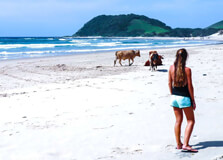
Sandy Bay Beach is a picturesque stretch of sandy coastline located in the Western Cape province of South Africa. Situated near the popular tourist destination of Cape Town, this beach is known for its natural beauty and pristine waters. Sandy Bay Beach is a favorite spot for both locals and tourists looking to relax, swim, and enjoy various water sports activities. Water Sports Water sports enthusiasts will find plenty of opportunities to have fun at Sandy Bay Beach. Popular activities include swimming, surfing, windsurfing, kiteboarding, and snorkeling. The clear waters and gentle waves make it an ideal spot for both beginners and experienced water sports enthusiasts. How To Reach Sandy Bay Beach is easily accessible by car from Cape Town. The beach is located approximately 45 minutes away from the city center. Visitors can also take a taxi or use public transportation to reach the beach. Parking facilities are available near the beach entrance. Best Time To Visit The best time to visit Sandy Bay Beach is during the summer months of December to February when the weather is warm and sunny. This is also the peak tourist season, so visitors should expect larger crowds during this time. For those looking for a quieter experience, visiting during the shoulder seasons of spring and autumn can also be a great option. Places To Stay Near Sandy Bay Beach There are several accommodation options available near Sandy Bay Beach, ranging from luxury resorts to budget-friendly guesthouses. Some popular choices include The Twelve Apostles Hotel and Spa, Tintswalo Atlantic, and Sunset Beach Guest House. Visitors can choose accommodation based on their budget and preferences. Traveller Tip Visitors to Sandy Bay Beach are advised to bring their own food and drinks as there are limited dining options available on the beach. It is also recommended to bring sunscreen, a hat, and sunglasses to protect yourself from the strong African sun. Things To Carry When visiting Sandy Bay Beach, visitors should consider carrying essentials such as sunscreen, a hat, sunglasses, a beach towel, snacks, and plenty of water. It is also recommended to bring a beach umbrella or a beach chair for added comfort. Tourist Attractions To See In And Around The Sandy Bay Beach While at Sandy Bay Beach, visitors can explore nearby attractions such as the Cape Point Nature Reserve, Hout Bay, and the iconic Table Mountain. The stunning views and natural beauty of the Western Cape make it a perfect destination for nature lovers and outdoor enthusiasts. Shopping For those looking to indulge in some retail therapy, the nearby town of Camps Bay offers a range of boutique shops, art galleries, and souvenir stores. Visitors can shop for locally-made crafts, jewelry, and clothing to take home as a memento of their South African adventure. Nightlife At Sandy Bay Beach While Sandy Bay Beach itself is a tranquil and relaxing spot, visitors looking for nightlife can head to nearby Cape Town. The city has a vibrant nightlife scene with plenty of bars, clubs, and restaurants to choose from. Long Street and the V&A Waterfront are popular nightlife spots that offer a variety of entertainment options.
Explore More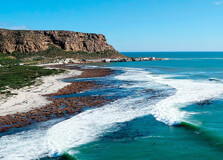
Elands Bay Beach is a stunning stretch of coastline located in the Western Cape province of South Africa. Known for its pristine white sandy beaches, crystal clear waters, and towering cliffs, this beach is a popular destination for both locals and tourists alike. The beach is surrounded by natural beauty, with the Elands Bay River flowing into the sea, creating a picturesque setting for visitors to enjoy. Water Sports Elands Bay Beach is a haven for water sports enthusiasts. Visitors can enjoy a variety of activities such as surfing, kiteboarding, windsurfing, and fishing. The beach is known for its excellent surfing conditions, with several world-class surf breaks attracting surfers from all over the world. For those looking to try their hand at kiteboarding or windsurfing, the strong winds and wide open beaches make Elands Bay Beach the perfect spot to catch some waves. How To Reach Elands Bay Beach is easily accessible by car, located just off the R366 highway. The closest major city is Cape Town, which is approximately a 2.5-hour drive away. Visitors can also take a scenic drive along the coast to reach the beach, enjoying stunning views along the way. Best Time To Visit The best time to visit Elands Bay Beach is during the summer months, from December to February, when the weather is warm and sunny. This is the perfect time to enjoy the beach and participate in water sports activities. The winter months, from June to August, can be chilly and rainy, so it is best to visit during the summer for optimal beach weather. Places to Stay near Elands Bay Beach There are several accommodation options near Elands Bay Beach, ranging from luxury resorts to budget-friendly guesthouses. Visitors can choose to stay in beachfront cottages, eco-friendly lodges, or cozy bed and breakfasts. Some popular options include Lamberts Bay Hotel, Doringbaai Camping, and Seaview Villa. It is recommended to book accommodation in advance, especially during the peak tourist season. Traveller Tip One tip for visitors to Elands Bay Beach is to bring sunscreen and plenty of water. The sun can be strong, especially during the summer months, so it is important to stay hydrated and protect your skin from the sun's rays. Additionally, be sure to check the weather forecast before heading to the beach to ensure optimal conditions for water sports activities. Things To Carry When visiting Elands Bay Beach, it is important to pack essential items such as sunscreen, a hat, sunglasses, a beach towel, and plenty of water. For water sports enthusiasts, be sure to bring your surfboard, kiteboard, or fishing gear. It is also a good idea to pack a picnic lunch or snacks to enjoy on the beach. Tourist Attractions To See In And Around The Elands Bay Beach Aside from the beautiful beach itself, there are several tourist attractions to see in and around Elands Bay Beach. Visitors can explore the nearby Verlorenvlei Estuary, a protected wetland area that is home to a variety of bird species. The Verlorenvlei Nature Reserve offers hiking trails and birdwatching opportunities for nature enthusiasts. Other nearby attractions include the Elands Bay Cave paintings, which provide a glimpse into the area's rich history. Shopping There are a few shops and markets near Elands Bay Beach where visitors can purchase souvenirs, local crafts, and fresh seafood. The nearby town of Elands Bay offers a small shopping area with stores selling beachwear, surf gear, and handmade gifts. Visitors can also find a variety of seafood restaurants and cafes serving fresh fish and lobster caught locally. Nightlife At Elands Bay Beach While Elands Bay Beach is a peaceful and quiet destination, there are a few nightlife options for visitors to enjoy. The beachfront resorts and guesthouses often host evening entertainment such as live music, bonfires, and beach parties. Visitors can also head into the nearby towns of Lamberts Bay or Elands Bay for a night out at a local pub or bar. Whether you prefer a laid-back evening by the sea or a night of dancing and socializing, Elands Bay Beach offers something for everyone.
Explore More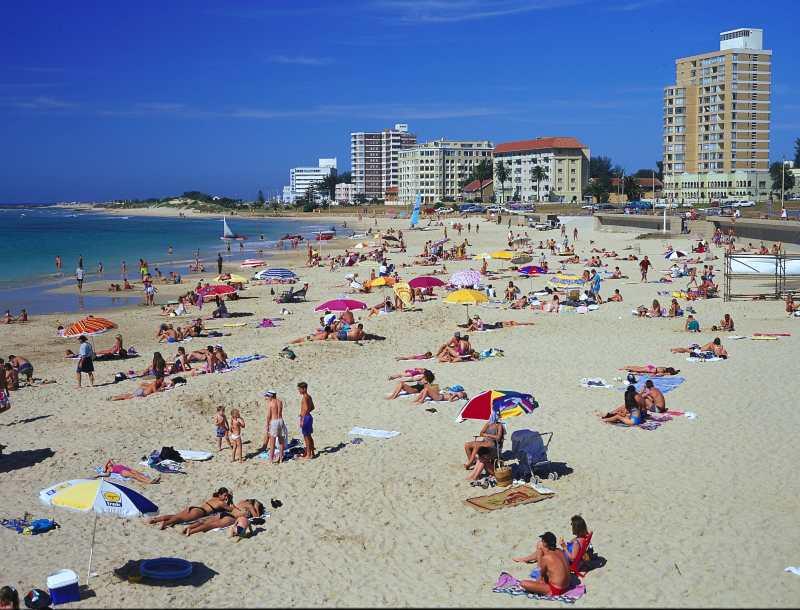
The Eastern Cape province of South Africa is home to some of the most breathtaking beaches in the country. With its pristine white sandy shores, crystal clear waters, and stunning views, the Eastern Cape beaches are a paradise for beach lovers and water sports enthusiasts. Water Sports The Eastern Cape beaches offer a wide range of water sports activities for visitors to enjoy. From surfing and kiteboarding to snorkeling and scuba diving, there is something for everyone to indulge in. The warm waters and gentle waves make it the perfect destination for water sports enthusiasts of all levels. How To Reach The Eastern Cape beaches are easily accessible by both road and air. The major cities of Port Elizabeth and East London have airports that connect to all major South African cities. Visitors can also opt for a scenic drive along the Garden Route from Cape Town, which offers stunning views of the coastline. Best Time To Visit The best time to visit the Eastern Cape beaches is during the summer months of December to February when the weather is warm and sunny. This is also the peak tourist season, so it is advisable to book accommodation in advance to avoid any last-minute hassles. Places To Stay Near Eastern Cape Beaches There are plenty of accommodation options near the Eastern Cape beaches, ranging from luxury resorts and boutique hotels to budget-friendly guesthouses and backpacker hostels. Some popular places to stay include Port Elizabeth, Jeffreys Bay, and Kenton-on-Sea. Traveller Tip One useful tip for travellers visiting the Eastern Cape beaches is to always carry sunscreen and a hat to protect yourself from the strong African sun. It is also advisable to stay hydrated and drink plenty of water, especially during the hot summer months. Things To Carry Some essential items to carry when visiting the Eastern Cape beaches include a swimsuit, beach towel, sunglasses, flip flops, and a camera to capture the stunning scenery. It is also a good idea to carry a reusable water bottle to stay hydrated throughout the day. Tourist Attractions To See In And Around The Eastern Cape Beaches Aside from the beautiful beaches, the Eastern Cape is also home to a variety of tourist attractions worth exploring. Some popular places to visit include Addo Elephant National Park, Tsitsikamma National Park, and the 1820 Settlers Monument in Grahamstown. Shopping The Eastern Cape beaches offer a unique shopping experience, with a variety of local markets and shopping malls to explore. Visitors can shop for traditional African crafts, artwork, and souvenirs to take back home as a memento of their trip. Nightlife At Eastern Cape Beaches After a day of sunbathing and water sports, visitors can enjoy the vibrant nightlife at the Eastern Cape beaches. From beachfront bars and restaurants to nightclubs and live music venues, there is something for everyone to enjoy after the sun goes down.
Explore More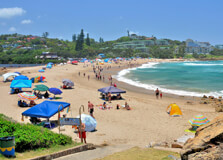
The South Coast Beaches in KwaZulu-Natal, South Africa, are known for their stunning turquoise waters, golden sandy beaches, and warm weather. The coastline stretches for over 120 kilometers, offering a variety of beaches to suit every preference, from secluded coves to bustling surf spots. Water Sports The South Coast Beaches are a haven for water sports enthusiasts. Visitors can enjoy activities such as surfing, snorkeling, scuba diving, kayaking, and deep-sea fishing. The warm Indian Ocean waters provide the perfect conditions for these activities, making the South Coast an ideal destination for adrenaline junkies and water lovers alike. How To Reach The South Coast Beaches are easily accessible by car from Durban, which is located approximately 100 kilometers away. The N2 highway runs along the coastline, providing a scenic drive to the various beach towns along the coast. Visitors can also reach the South Coast by bus or shuttle services from Durban or by flying into King Shaka International Airport and renting a car. Best Time To Visit The best time to visit the South Coast Beaches is during the summer months of December to February when the weather is hot and sunny, and the ocean is warm and inviting. However, the winter months of June to August can also be a great time to visit, as the beaches are less crowded, and the weather is mild. Places To Stay Near South Coast Beaches There are numerous accommodation options near the South Coast Beaches, ranging from luxury resorts and boutique hotels to budget-friendly guesthouses and self-catering apartments. Popular beach towns to stay in include Margate, Umhlanga Rocks, and Scottburgh, each offering a range of accommodation options to suit every budget and preference. Traveller Tip Be sure to pack sunscreen, a hat, and plenty of water when visiting the South Coast Beaches, as the sun can be very strong, and dehydration is a risk, especially during the hot summer months. Also, be mindful of the ocean currents and always swim in designated swimming areas with lifeguards on duty. Things To Carry When visiting the South Coast Beaches, it is essential to carry a beach bag with sunscreen, a towel, a hat, sunglasses, a reusable water bottle, and snacks. Additionally, bring along a camera to capture the stunning coastal scenery and wildlife that can be spotted along the shoreline. Tourist Attractions To See In And Around The South Coast Beaches Aside from the beautiful beaches, the South Coast offers a variety of tourist attractions to explore, such as the Oribi Gorge Nature Reserve, the Wild Coast Sun Resort and Casino, and the Lake Eland Game Reserve. Visitors can also enjoy activities such as whale watching, hiking, and bird watching in the surrounding areas. Shopping The South Coast Beaches are home to several shopping centers and markets where visitors can purchase souvenirs, beachwear, and local crafts. Popular shopping destinations include the South Coast Mall in Shelly Beach, the Margate Flea Market, and the Scottburgh Plaza, each offering a unique shopping experience. Nightlife At South Coast Beaches After a day of sun and surf, visitors can enjoy the vibrant nightlife scene at the South Coast Beaches, with a variety of bars, clubs, and restaurants to choose from. Popular nightlife spots include the Coco Bongo Beach Bar in Margate, the Drop Zone Bar in Amanzimtoti, and the Beach Bums Restaurant and Bar in Marine Drive, Umhlanga.
Explore More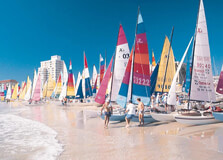
Hobie Beach, located in the vibrant coastal city of Gqeberha (formerly Port Elizabeth), is one of the most famous and well-loved beaches in South Africa's Eastern Cape. Known for its golden sands, warm Indian Ocean waters, and family-friendly atmosphere, Hobie Beach offers a perfect mix of relaxation, recreation, and scenic beauty. It is part of the city's picturesque beachfront that stretches along Marine Drive and draws both local residents and tourists year-round. How to Reach Hobie Beach, Gqeberha Hobie Beach is easily accessible from anywhere within Gqeberha. It is situated along Marine Drive in the Summerstrand suburb, just a few minutes' drive from the city center and the Port Elizabeth International Airport. Visitors can take taxis, rental cars, or even local buses to reach the beach. For those staying near the beachfront, walking or cycling to Hobie Beach is an enjoyable option. Clear signage and convenient parking make reaching the beach simple and stress-free. Weather Gqeberha enjoys a temperate coastal climate, making Hobie Beach a year-round destination. Summers (November to March) are warm, with temperatures ranging between 22°C and 30°C (72°F to 86°F), while winters (June to August) are mild, with temperatures averaging between 10°C and 20°C (50°F to 68°F). The area receives moderate rainfall throughout the year, with occasional windy days due to its coastal position. The best times to visit are spring and summer when the sea is warmer and the skies are usually clear. Timing Hobie Beach is open to the public 24/7, although the best time to visit is during daylight hours, especially from 7:00 AM to 6:00 PM. Lifeguards are on duty during peak hours and seasons, providing added safety for swimmers. Early mornings and late afternoons are particularly popular for walks, sunbathing, and photography due to the beautiful lighting and cooler temperatures. Why Famous for Hobie Beach, Gqeberha? Hobie Beach is famous for its soft sands, clear blue water, and safe swimming conditions. It is also a hub for water sports such as windsurfing, paddleboarding, and sailing. The beach's popularity is further enhanced by its proximity to other attractions like Shark Rock Pier, The Boardwalk entertainment complex, and nearby restaurants. Additionally, Hobie Beach regularly hosts sporting and cultural events, including the annual Ironman South Africa triathlon, which brings athletes from all over the world. Entry and Visit Details about Hobie Beach, Gqeberha There is no entry fee to access Hobie Beach, making it an ideal location for budget-friendly outings. The beach provides well-maintained public amenities such as restrooms, changing rooms, and outdoor showers. Parking is available nearby along Marine Drive, and the beach is wheelchair accessible with ramps in certain areas. Visitors are advised to follow beach safety rules and pay attention to lifeguard flags before entering the water. History and Architecture Hobie Beach has long been an iconic part of Gqeberha’s coastline. Its name is derived from the popular “Hobie Cats” — small sailboats that frequently dot the waters in front of the beach. The nearby Shark Rock Pier, a prominent feature of the beach, was constructed to provide scenic views and safe access for anglers and photographers. The surrounding beachfront development, including wide walkways, landscaped lawns, and recreational facilities, reflects a blend of modern design and thoughtful coastal planning aimed at promoting leisure and tourism. Things to Do 1. Swimming: The calm waves make it one of the safest places for swimming in the area. 2. Sunbathing: Relax on the clean sands with the sounds of the ocean around you. 3. Water Sports: Rent equipment for windsurfing, bodyboarding, paddleboarding, or try sailing with a local club. 4. Pier Walk: Stroll along Shark Rock Pier for ocean views and great photo opportunities. 5. Beach Volleyball: Enjoy a friendly game on the beach courts with friends or locals. 6. Dining: Visit one of the beachfront cafes or restaurants for fresh seafood and drinks. 7. Events: Attend live events, concerts, or sports competitions hosted on or near the beach. Facts about Hobie Beach, Gqeberha - Hobie Beach is a Blue Flag Beach, meaning it meets high international standards for water quality, safety, and environmental management. - The beach is a central venue for the Ironman South Africa race each year. - It’s named after the Hobie Cat sailboats often seen near its shores. - The beach is popular with both locals and tourists due to its convenience and facilities. - Hobie Beach is patrolled by professional lifeguards during peak seasons. Tips about Hobie Beach, Gqeberha - Arrive early: Especially in summer and on weekends, to get a good parking spot and a prime beach location. - Stay sun-safe: Bring sunscreen, hats, and umbrellas to protect from the sun. - Follow safety flags: Only swim in designated areas marked by lifeguard flags. - Keep it clean: Use available bins and leave no litter to help preserve the beach's beauty. - Explore nearby: Combine your visit with a walk to Humewood Beach or a trip to The Boardwalk Casino & Entertainment World.
Explore More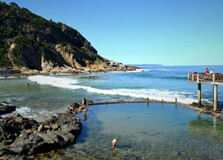
Victoria Bay, often referred to as "Vic Bay," is a small, secluded cove nestled along the world-famous Garden Route between George and Wilderness in the Western Cape, South Africa. Renowned for its natural beauty, pristine beach, and consistent surf breaks, Victoria Bay is a beloved destination for surfers, nature lovers, and families seeking a tranquil seaside retreat. Despite its small size, this hidden gem holds a big place in the hearts of locals and tourists alike, offering a quiet escape with a charming seaside community atmosphere. How to Reach Victoria Bay, George Victoria Bay is conveniently located about 10 kilometers east of George and 6 kilometers west of Wilderness, making it easily accessible by road. By Car: From George, follow the N2 highway east towards Wilderness. Look for the clearly marked turnoff to Victoria Bay, which leads down a narrow tarred road to the beach. Parking is available near the beachfront. By Air: The closest airport is George Airport (GRJ), approximately 20 km from Victoria Bay. From there, you can hire a car or arrange a shuttle service. By Public Transport: Minibuses and taxis from George or Wilderness can take you close to the area, but walking or a short taxi ride from the N2 junction is required to reach the bay itself. Weather Victoria Bay enjoys a mild coastal climate throughout the year, making it a pleasant destination in all seasons. Summer (Dec–Feb): Warm and sunny, with temperatures ranging from 20°C to 30°C, perfect for beach activities. Autumn (Mar–May): Mild temperatures and fewer crowds make this an ideal time for peaceful visits. Winter (Jun–Aug): Cooler, with occasional rain and temperatures ranging from 8°C to 18°C. Surfers often find excellent swells during winter. Spring (Sep–Nov): Blooming vegetation and moderate weather create a scenic atmosphere ideal for walks and photography. Timing Victoria Bay is open to the public all year round. There are no restricted hours for visiting the beach or its surroundings. Best Time to Visit: Early mornings for sunrise views or late afternoons for sunsets. Ideal Season: Summer and spring for general beachgoers; winter for serious surfers chasing waves. Why Famous for Victoria Bay, George? Victoria Bay is famous for its excellent surf conditions and relaxed vibe. Unlike other touristy beaches, Vic Bay retains a natural, untouched feel with minimal commercial development. It's one of the best-kept secrets of the Garden Route. Surfing Paradise: Its reef break provides consistent waves, attracting surfers from all over the country. Family-Friendly Atmosphere: Calm waters near the shore make it safe for kids, and the beach has picnic areas and a small grassy lawn. Natural Beauty: Surrounded by cliffs and forested slopes, the bay offers picturesque views and a peaceful ambiance. Fishing: A small pier allows for rock and surf fishing, adding to its charm for anglers. Entry and Visit Details about Victoria Bay, George Entry Fee: None. Victoria Bay is a public beach and free to access. Facilities: Public toilets, showers, a small shop, a takeaway kiosk, and parking are available on-site. Parking: Limited parking near the beachfront, with overflow space available above the hill. Security: Generally safe during the day. It’s advised to avoid leaving valuables unattended in your vehicle. History and Architecture Victoria Bay's history dates back to early 20th-century seaside holiday traditions in South Africa. Unlike commercial beaches that evolved into resort hubs, Victoria Bay remained a quaint retreat with minimal development. Its name is believed to honor Queen Victoria, aligning with many colonial-era naming conventions. The architectural style of the few homes and cottages along the hillside reflects rustic, coastal charm. Most structures are privately owned holiday homes or guest cottages. A small, historical jetty built decades ago still serves local fishermen and adds to the nostalgic character of the bay. Things to Do Surfing: Join local surfers on one of the best right-hand point breaks in the region. Swimming: Safe in designated areas; lifeguards are often present in peak season. Picnicking: Enjoy meals under shaded trees or on the grassy patch near the beach. Fishing: The rocky outcrop and jetty are perfect for shore fishing. Photography: Sunrise, cliffside views, and wave action make for excellent photo opportunities. Walking: Short walks along the beach and nearby coastal paths reveal more scenic views and birdlife. Facts about Victoria Bay, George Victoria Bay is one of the smallest bays on the Garden Route, stretching only about 200 meters across. The surf here is ranked among the best along the South African coast, with waves suitable for intermediate and advanced surfers. It is home to a small community of regular holiday-goers who return each year, often for decades. Dalene Matthee, a South African novelist, referenced the coastal forests near Victoria Bay in her literary works. Marine life sightings, such as dolphins and seals, are common offshore. Tips about Victoria Bay, George Arrive Early: Parking can become scarce by mid-morning during peak seasons and holidays. Bring Snacks: The on-site shop is limited, so bring your own food if you plan to stay a while. Respect Nature: Avoid leaving trash behind and stick to designated paths to preserve the area’s natural beauty. Stay Nearby: Consider booking a stay at one of the self-catering cottages or guesthouses overlooking the bay for a peaceful seaside experience. Pack Layers: Even in summer, the coastal breeze can get cool, especially early in the morning or late in the afternoon.
Explore More